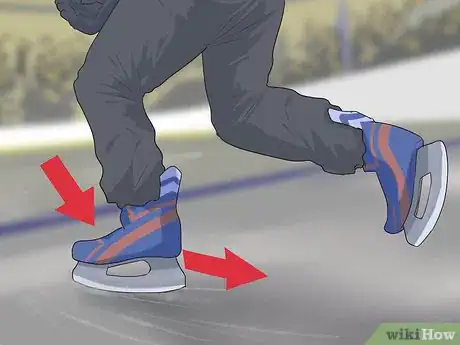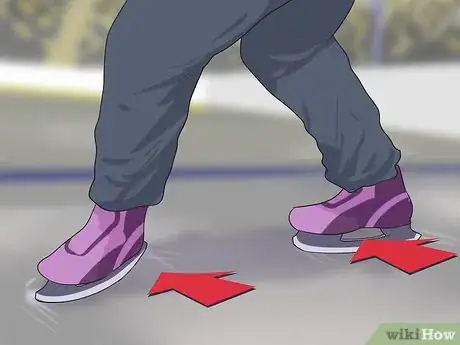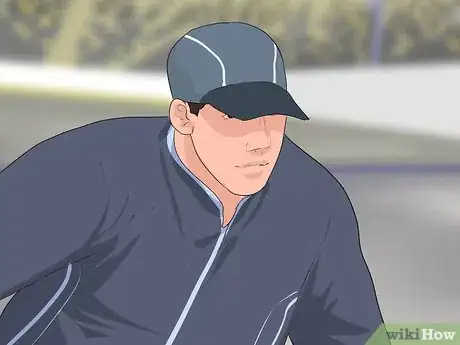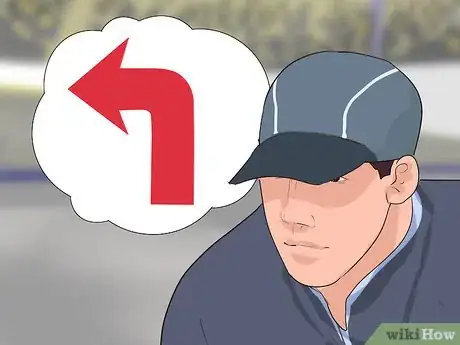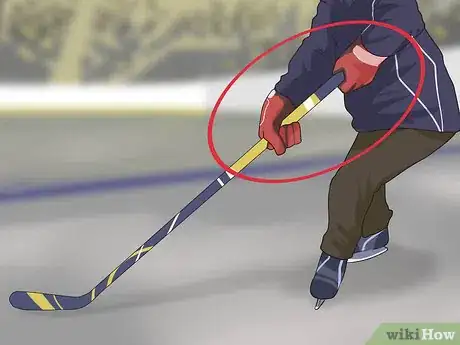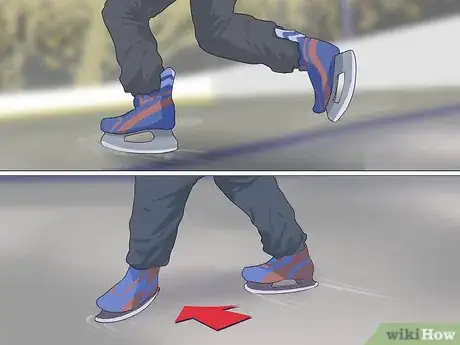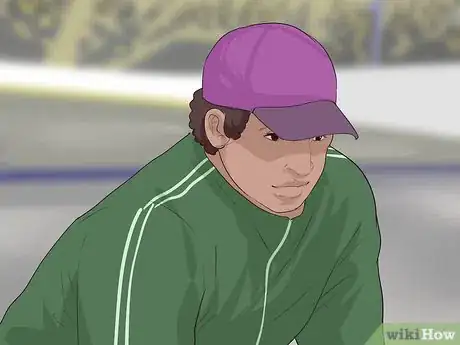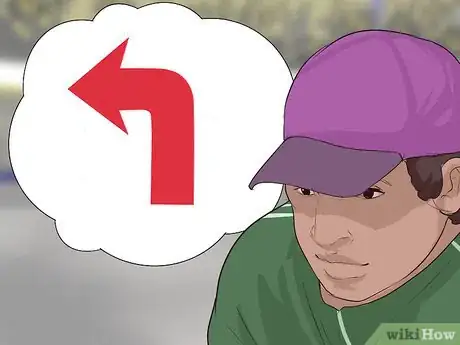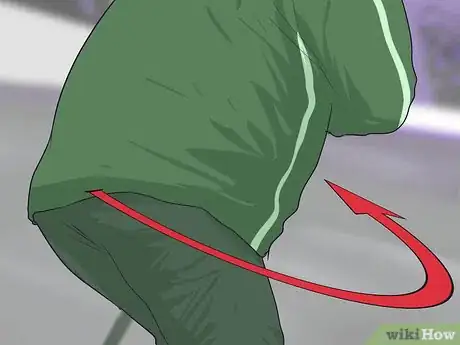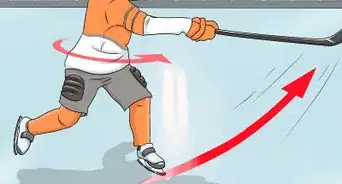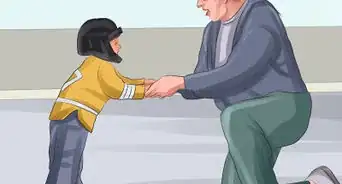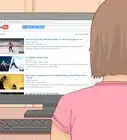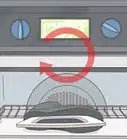wikiHow is a “wiki,” similar to Wikipedia, which means that many of our articles are co-written by multiple authors. To create this article, 12 people, some anonymous, worked to edit and improve it over time.
This article has been viewed 90,435 times.
Learn more...
Beginner skaters can get away with doing a "snowplow" or "pizza slice," which involves pointing the toes inward until the friction brings you to a gradual stop. However, once you are skating faster, you will need to know how to stop and change directions on a dime. This is where the hockey stop comes in! A hockey stop is basically a sideways slide using the edge of the skate. The friction of the blade scraping on the ice will gradually slow you to a halt.
Steps
Learning the Ice Hockey Stop
-
1Skate a few strides forward. Begin along the boards, holding the boards with your hands. Take it slow, at first. You don't want to pick up too much speed until you have gotten a feel for how to hockey stop. You should be looking forward, not down at your feet.
-
2Practice pushing from side to side and stopping. Spread your feet slightly apart, and keep your skates running parallel in the direction you're headed. You may find that you are able to stop your side-to-side motion with just your inside foot.Advertisement
-
3Rotate your hips in the direction you want to turn. Rotate your left hip to turn the left skate, and rotate your right hip to turn the right skate. At the same time, try to angle the skate blades slightly back to shave the ice. Be careful! If you dig in too much, you will "catch an edge" and fall forward.
-
4Bend your knees deeply. As you rotate your hips, be sure to bend your knees. Keep your weight low, and work on balance. Staying low will help you stop with less effort. It might also make the falls more bearable.[1]
- The deeper the bend, the quicker the stop. If your knees aren't bent, you will almost always fall!
-
5Drag your skates across the ice to stop. First, identify the "hollow" or "flat edge" on each of your skates. All skates have an inside edge, an outside edge, and a "flat edge," which is really the concave space between the two. The "flat edge" allows the skate to slide sideways across the ice without digging in. As you enter the stop, rotate your hips, bend your knees, and turn your skates to allow them to slide on their "flat edges." Hold this position until you stop.[2]
- To clarify: reduce your weight off the outside skate, and turn both skates parallel to the direction you are travelling. Apply pressure to the inside edge of the outside skate and simultaneously to the outside edge of the inside skate.
-
6Practice to build speed and finesse. Keep working on your hockey stop. Gradually work up to skating faster and faster, and to stopping at high speeds. If you're playing competitive hockey, you'll often need to stop on a dime to change directions or avoid colliding with something.
- Once you feel comfortable turning one direction to stop: practice turning the opposite direction, using the same technique.
Practicing the Hockey Stop
-
1Pick a direction to turn, and perfect it before trying the other direction. Most skaters find it easier to turn in one direction. If turning right, your left skate should be on the outside. If turning left, your right skate should be on the outside.
-
2Find someone to hold one end of a hockey stick while you hold the other. Have them pull to your side as you try to resist their motion. When done correctly, they will be able to slowly pull you to your side as you form small amounts of snow at your blades. This will help you become more familiar with proper body angle relative to the ground as well as general balance.
-
3Work up to a quick transition. One of the keys to stopping at speed is being able to quickly switch from a skating position to having both feet perpendicular to your line of travel. Start by having someone pull you. Then, practice transitioning from a "gliding" position to a "stopping" position. Once you are comfortable with this transition, work on skating and stopping: from low speeds to higher speeds.
-
4Be persistent. It takes time to train your knees, your hips, and your feet to work in sync – and that means a lot of time down on the ice. Chances are that you will fall a few times until you can get your balance right. Just keep trying and getting back up. With a bit of determination, you should be hockey stopping in no time!
Hockey Stopping on Inline Skates
The classic "hockey stop" move mainly applies to ice hockey. You can also use this technique to stop on inline skates, although the moves are somewhat different. Stopping on ice skates takes a bit more finesse, while the wheels inline skates require that you apply a bit more force.[3]
-
1Take a few strides forward to pick up a little speed. Knees should be bent. Start slowly, at first, for safety.
-
2Pick a direction to turn that feels the most natural. If you want to turn clockwise, you will be sliding on your left foot. If you want to turn counterclockwise, you will be sliding on your right foot.
-
3Turn your body until the sliding foot is in front of you. Your foot should be perpendicular to the direction you are traveling. This will create friction against the floor. Hold this position until you come to a stop.
- Straighten the leg and angle the wheels so they slide on the floor. This friction is what will cause you to stop.
- Keep the other leg bent at the knees as the skate rotates approximately 180 degrees. All your weight should be on this leg.
References
About This Article
To perform a hockey stop, start by skating a few strides forward, but don’t pick up too much speed. Spread your feet slightly apart and keep your skates running parallel in the direction you’re headed, and practice pushing from side to side. When you’re ready to stop, rotate your hips in the direction you want to turn, and try to angle the skate blades slightly back to shave the ice. Bend your knees deeply and drag your skates across the ice to stop. Keep reading for tips on how to improve your hockey stop, like practicing one side first, then the other!

